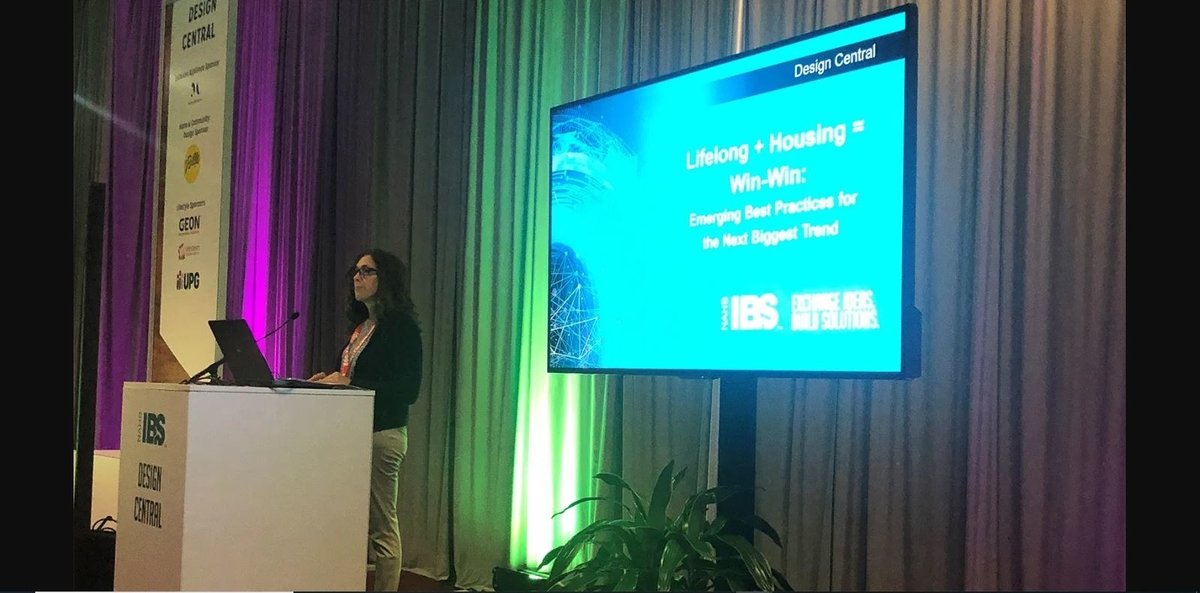How to Design Homes for Today's Aging Population

At 75 million strong, baby boomers have been a compelling force within the housing market. Given the sheer size of this demographic, as well as their wealth, this generation has the ability to dictate changes in the market — and hopefully will, as they continue to age and desire different features and amenities in their homes, to promote more inclusive design elements.
According to the most recent Housing America’s Older Adults report by the Harvard Joint Center for Housing Studies, those 65 and older will jump from 26% of the population to 34% percent in 2038, with the fastest-growing age group among them in the 80+ category. However, the report notes that they’re less likely to move, with only 3.6% of individuals aged 65-79 — compared to 13.6% of those under 50 — relocating in 2017-2018, more than half of which relocated within the same county.
This indicates a desire to age in place within their existing communities. But very few homes incorporate the necessary accessibility features for them to do so; according to the latest data available, just 3.5% of all U.S. homes included features such as grab-bars or handrails in the bathroom, extra-wide hallways and doors, and a bedroom on the entry level.
So what can the home-building industry do to help increase the supply of necessary housing, not only for this demographic but future generations as well?
Stephanie Firestone, MUP, with AARP shared insights with housing professionals in the Design, Remodeling and 55+ Housing Centrals at IBS to help improve the availability of accessible homes.
Designs today are based on the sensory skills, size and capabilities of an able-bodied 170-pound, 5’9″ male, Firestone shared. “Everyone else has to adapt,” she added. However, by incorporating six basic principles, home builders can create more homes that account for a greater variety of functionality and amenities needed for older adults as well as their families.
- Optimal balance: “Housing and communities should fit people’s varying functional levels, providing an optimal balance between effort and support,” Firestone noted, to adapt for a range of people. Examples include no-step entries, pocket doors and grab bars.
- Expectations: “People have very few choices and settle for what’s available,” Firestone observed. In addition to introducing more innovative designs, housing professionals also need to educate — both consumers and themselves — on what options are available to help raise consumer expectations.
- Finance: “New financial models are needed that view lifelong living environments as an asset,” Firestone said.
- Planning: Municipal planning needs to take residents’ needs and abilities into account, Firestone shared, including social cohesion to ensure older residents are able to actively participate. Examples include places in which residents can work, live and play — an amenity desired by baby boomers and millennials alike — and ensuring there are medical facilities nearby.
- Collaboration: “Cross-sector collaboration is critical to integrating the concept of optimal balance across a lifespan,” Firestone noted. It’s also an opportunity to retrofit and see what existing components already exist within a community to help address health and wellness for residents.
- Multigenerational: In addition to social cohesion in the planning process to ensure multigenerational interaction, there also needs to be a concerted effort to combat ageism, Firestone noted, including “using positive language regarding all ages.” One way in which multigenerational living is already coming into play in tight housing markets is college students renting rooms from older adults, which allows them to spend more time together.
College towns are becoming increasingly attractive destinations for boomer buyers for similar reasons, including conveniences such as shopping, entertainment and education opportunities, and unique amenities such as lectures, concerts and college sporting events.
Interested in learning more about building for consumers aged 55 or older? Check out resources from AARP and NAHB’s 55+ Housing Industry Council.

